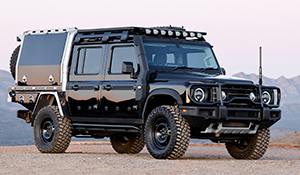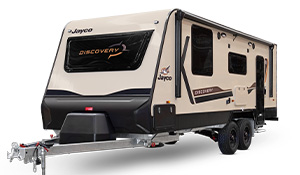2018 Toyota LandCruiser GXL 79 Double Cab
The Toyota LandCruiser GXL 79 Double Cab is ostensibly a work-ute, designed to cater to big mining companies, pastoralists and the like, who need to carry heavy loads into difficult-to-access places with a crew of up to five. Throw in some carpet, alloy wheels and a bit of chrome trim, however, and you have the perfect outback touring ute… almost.
What is the LandCruiser GXL 79 Double Cab?
The LandCruiser 79 Double Cab cab-chassis was late to the party in Toyota Australia’s 70 Series line-up. The first 70 Series Cruisers were launched here in the mid-1980s but the Double Cab model didn’t arrive until decades later in 2012.

Like the rest of the current 70 series range, the LC79 Double Cab has a 4.5-litre TDV8 engine mated to a five-speed manual transmission and part-time 4x4 system with high and low range. The body sits atop a separate chassis and the Double Cab shares the same 3180mm wheelbase as the Single Cab cab-chassis model.
Updated in 2016, the LC79 Double Cab scored Euro 5 emissions compliance thanks to new Piezo injectors and the addition of a diesel particulate filter (DPF), a revised gearbox with taller second- and fifth-gear ratios, auto-locking hubs, cruise control, vehicle stability control (VSC), active traction control (A-TRC), hill-start assist control (HAC), brake assist and electronic brake-force distribution. In addition, front and rear differential locks are standard.
In GXL trim, the LC79 Double Cab scores 16-inch alloy wheels with 265/70R16 tyres, aluminium side steps, fog lights, a snorkel and chrome grille.

What’s the interior like?
While it’s no luxury flagship, in GXL trim the LC79 Double Cab has all of the basic creature comforts a bush tourer really needs, including standard air conditioning (which had long been an optional extra on the 70 Series), cloth-covered seats and carpet.
While the analogue instrumentation looks old-school it’s certainly comprehensive, with gauges for fuel, coolant temperature, oil pressure, battery voltage, speedo and tacho, and lights for traction control, diff lock and VSC, along with an LCD odometer/tripmeter.
The dash has a conservative but functional design, with good ventilation, a double-DIN radio/CD player with USB input and Bluetooth, four speakers, power antenna, simple HVAC controls, a digital clock and a couple of 12V DC power outlets. The centre console is reasonably big but the glovebox is small, as are the door map pockets, and there’s only one cupholder.

The front seats are generous but basic, with only fore/aft and backrest adjustment. The big upright windscreen and deep side windows provide excellent visibility despite the absence of seat-height adjustment.
The rear seat is comfortable enough and there’s plenty of head room thanks to the ample roof height, but leg room is not fantastic and cabin width can be an issue if you try to squeeze three big blokes in the back. As for creature comforts, it’s sparse in the back with no vents for rear-seat passengers. And as for safety, the centre passenger has to make do with a lap-only seat belt and no headrest, and there are no child-seat anchors.
The rear seat has a fold and tumble function but no split, so you can only tie down big items like a fridge in the cabin if there are no passengers in the back. With the seat in its upright position there’s a bit of space to stow small items behind it.

What’s it like on the road?
For those used to driving passenger cars, SUVs or even bigger 4x4 wagons like the Prado or LandCruiser 200, there’s no doubt the LC79 Double Cab will feel quite agricultural on the road. Fire up big 4.5-litre TDV8 and you’ll notice a distinct lack of sound deadening between the engine bay and the cabin before you grab a hold of the long-throw gear lever and slot it into first.
The clutch is surprisingly light and progressive, but gearshifts are best performed in a slow and deliberate manner. Work your way up through the ratios to fifth and you won’t have to shift again until it’s time to slow down, or you’re confronted by an exceptionally big hill, because the TDV8 makes so much usable torque from low in the rev range it will pull away cleanly from a tad over 1000rpm.
The torque peak is nice and flat, too, with a claimed 430Nm available from 1200-3200rpm, so if you’re feeling lazy you can easily pull away from a standstill in second gear, although some owners have complained of excessive clutch wear, so it pays to go easy on the clutch especially if carrying a heavy load or towing. Nevertheless, on the open road you can leave the Cruiser in fifth gear all day long with a relaxed 2000rpm showing on the tacho at 100km/h.

The power-assisted recirculating ball and nut steering feels well weighted but is a little vague, and there’s plenty of feedback through the steering wheel over rough surfaces. Unladen ride quality can feel a harsh over bumps too, which is to be expected of a vehicle rated to carry a decent load and has the unspring weight of live-axles front and rear.
Body roll is quite pronounced when cornering, which is exacerbated by the narrower-than-front rear track. When Toyota introduced the 1VD-FTV engine in 2007 it widened the Cruiser’s front track but not the rear. There are several aftermarket solutions to correct this issue, such as Dana Australia’s Ultimate 60 rear-axle kit, or Marks Adaptors portal-axle kit, but these are certainly not cheap upgrades.
When you need to carry a big load in the tray of the LC79 Double Cab, it’s advisable to put as much weight as far forward as possible, over the rear axle rather than behind it. Due to the tray’s long rear overhang, some Cruisers have been known to bend if too much weight is hanging out the back, and loading a vehicle in this way can also adversely affect vehicle handling.
As you’d expect of a vehicle with the aerodynamic profile of a brick outhouse, there’s a fair bit of wind noise at highway speeds, especially around the mirrors and the driver’s-side A-pillar where the snorkel is mounted.
A 130-litre fuel capacity provides a touring range in excess of 1000km, but if that’s not enough, several aftermarket manufacturers produce significantly larger capacity fuel tanks to suit the LC79.

What’s it like off the road?
The LC79 Double Cab is armed with most of the attributes that make a vehicle good off the road, including loads of low-rpm torque, impressive low-range reduction (44.1:1 in first gear), front and rear diff locks, good axle articulation, ample ground clearance and a decent 700mm wading depth.
What the specs don’t tell you, however, is how easy it is to drive this Cruiser off-road. The upright windscreen and deep side windows provide good outward visibility, the Cruiser’s angular design makes it easy to judge where its extremities are and, thanks to the live-axle suspension, you never feel as though you’re going to scrape its belly on bush tracks.
The only noticeable downside off-road is the mammoth 14.4m turning circle, which can make manoeuvring on tight tracks a bit of a chore.

Aftermarket Modifications
There are more aftermarket modifications available for the 70 Series LandCruiser than just about any other vehicle on the Australian market.
As well as the usual bolt-on mods, such as the fitment of bull bars, side rails and steps, suspension systems, more aggressive tyres, winches, driving lights and roof racks, there are several specialist companies that can provide GVM upgrades prior to the vehicle’s first registration, widening of the rear track, the fitting of portal axles for more ground clearance and the legal fitment of 35-inch tyres, and extension of the wheelbase to better handle heavy loads.
And as the LC79 Double Cab is a cab-chassis vehicle, there are numerous options when it comes to custom trays, service bodies or camper set-ups. With an LC79, you’re only limited by your imagination… and your budget.

What safety features does it get?
While Toyota made many significant structural changes to the LC79 Single Cab model to achieve a five-star ANCAP safety rating (a requirement of the big mining companies), other 70 Series variants, including the Double Cab, missed out on these upgrades that included thicker and stronger chassis rails, modified cross members and the inclusion of side curtain and driver’s knee airbags.
While the LandCruiser GXL 79 Double Cab misses out on a five-star ANCAP rating, it does have several active safety features including ABS brakes, vehicle stability control (VSC), active traction control (A-TRC), hill-start assist control (HAC), brake assist and electronic brake-force distribution.
The LC79 is also equipped with driver and passenger airbags and front seatbelt pre-tensioners, but other than these features it’s lacking on the safety front.

So, what do we think of the LandCruiser GXL Double Cab?
Designed to drive around paddocks and deep into mines, the LC79 Double Cab translates amazingly well as an off-road tourer, especially for those who want to head into particularly difficult and remote terrain. The fact it’s so well supported by the four-wheel drive aftermarket makes a good thing even better.
Bear in mind that the LC79 is very utilitarian in nature, so if you live in the city and you’re after a daily driver that will only see occasional recreational use, you’d best look elsewhere.
Words Dean Mellor

2018 Toyota LandCruiser GXL 79 Double Cab
Price $71,740+ORC Warranty three years/100,000km Safety Unrated Service Intervals 10,000km Engine 4.5-litre V8 turbo-diesel Power 151kW at 3400rpm Torque 430Nm at 1200-3200rpm Transmission Five-speed manual Drive Part-time 4WD Dimensions 5220mm (L); 1870mm (W); 1945mm (H); 3180mm (WB) Turning Circle 14.4m Ground Clearance 230mm Wading depth 700mm Kerb Weight 2175kg GVM 3300kg Payload 1125kg Spare Full-size Fuel Tank 130 litres Thirst 10.7L/100km









